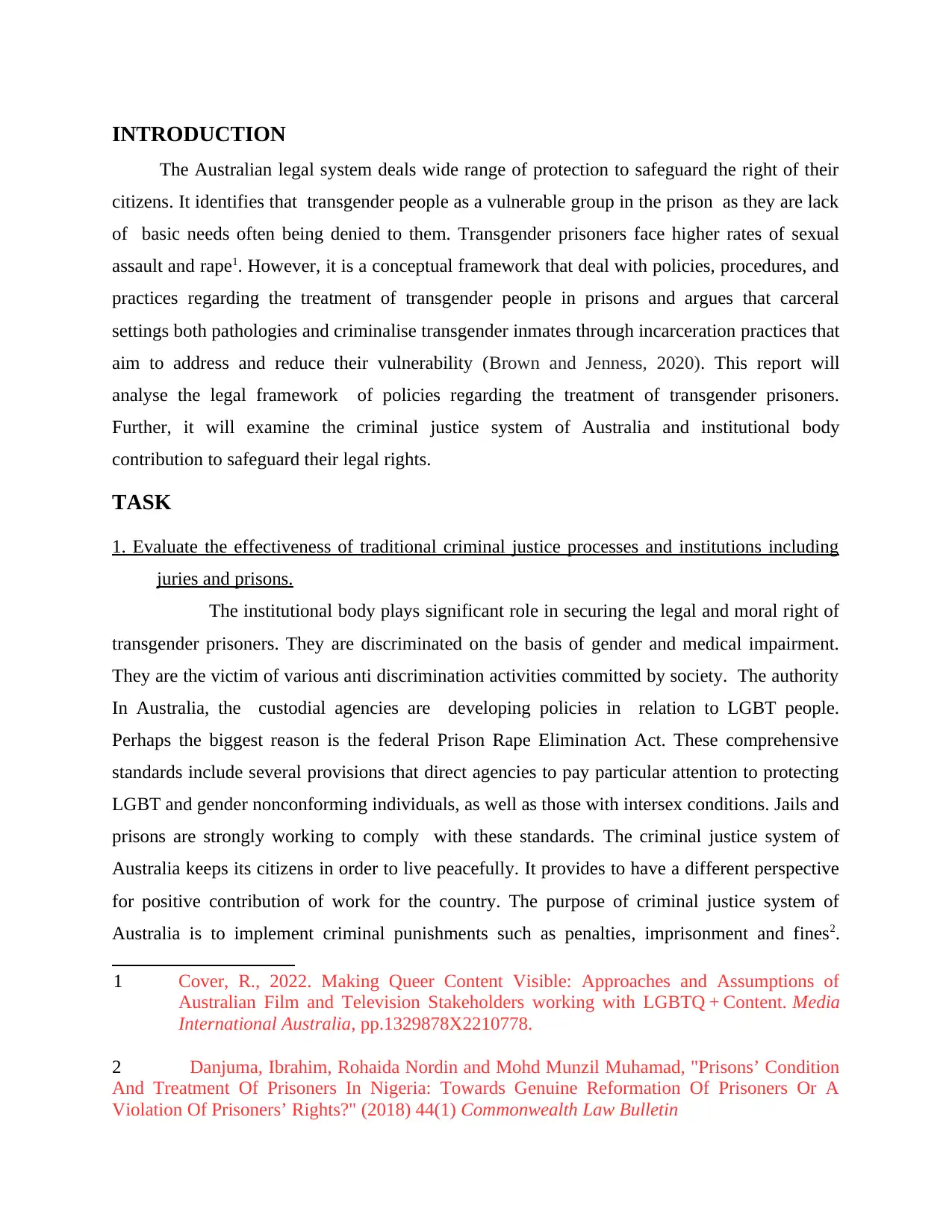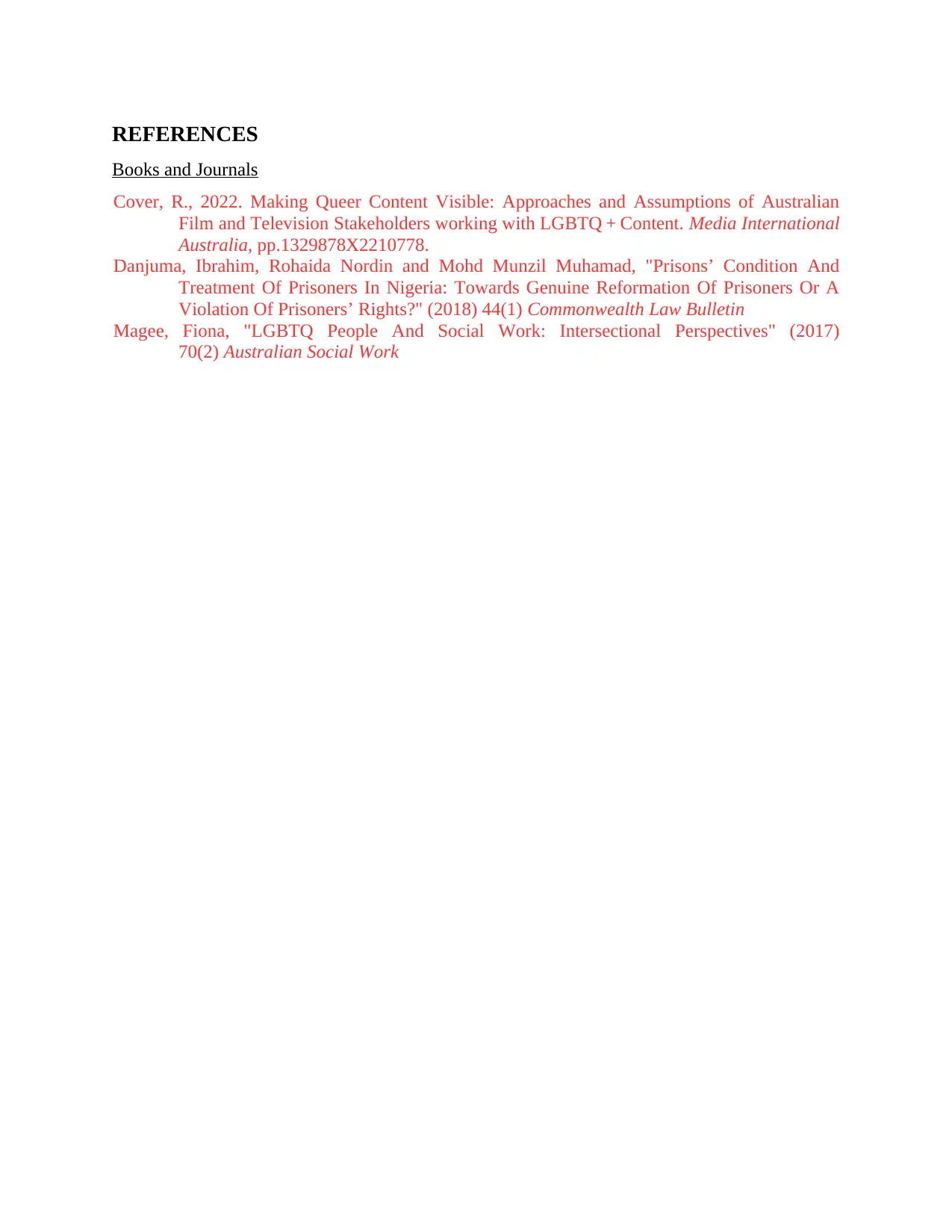CRIM2044 Assessment 1: Australian Prisons and LGBTIQ+ Inmate Needs
VerifiedAdded on 2023/06/09
|5
|733
|431
Report
AI Summary
This report critically examines the Australian prison system's treatment of Lesbian, Gay, Bisexual, Transgender, Intersex, and Queer (LGBTIQ+) inmates. It begins by acknowledging the legal framework and protections in place while highlighting the vulnerability of transgender individuals, who often face discrimination, sexual assault, and denial of basic needs. The report evaluates the effectiveness of traditional criminal justice processes and institutions, including juries and prisons, in safeguarding the rights of LGBTIQ+ inmates. It analyzes the role of institutional bodies in addressing discrimination and ensuring equitable treatment, considering factors such as gender identity and medical impairments. The report discusses relevant policies, standards, and the need for safe environments and different cell arrangements to protect transgender prisoners. It references academic sources to support its arguments and provides insights into the challenges faced by LGBTIQ+ inmates within the Australian prison system, ultimately advocating for reforms to better meet their needs.
1 out of 5












![[object Object]](/_next/static/media/star-bottom.7253800d.svg)